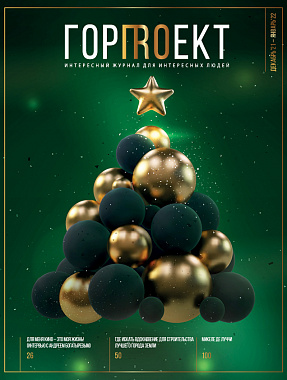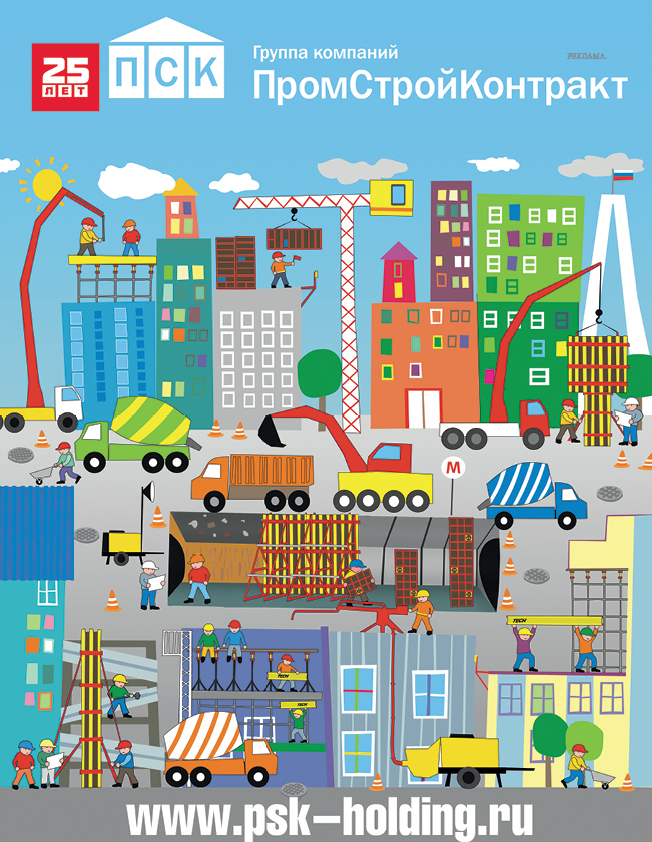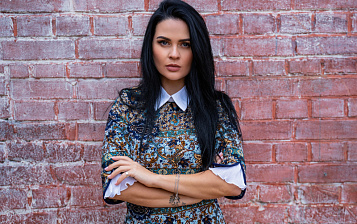Experience in the exchange of ideas of new Moscow architects.
The world of architecture has long become global. In the fall of 2021, the construction of an ultra-thin skyscraper in Manhattan was completed in New York according to the project of the Moscow bureau Meganom. At the same time, in Moscow, London-based Zaha Hadid Architects not only began to implement projects for five new Union Towers skyscrapers and a whole microdistrict on Rublyovka at once, but also took part in the capital’s largest forum of young architects, Open City, where along with Russian colleagues, they shared ideas on how to equip the capital and other cities of the country in a new way.
There are many such inspiring examples, but not all of them are visible outside the industry. As the chief architect Sergey Kuznetsov said at the opening of the forum, as a rule, new ideas circulate long before public formalization and are tested in practice. A good example is the General Plan of Moscow in 1935, which, as is often written in textbooks, determined the appearance of the capital for decades to come, but in fact it was officially adopted when the first Moscow metro trains had already been launched and the first “Stalins” were built by Ivan Zholtovsky and his students. Maxim Kirsanov, a special correspondent for Gorproekt magazine, talked to a new generation of young Moscow architects to understand what they are guided by when planning global architectural projects, within which we all may soon have to live.
Sociology and other sciences for the art of building
Architects often call themselves artists, but in modern conditions they are forced to work more like scientists conducting interdisciplinary research - in a dense environment of specialists in engineering, cultural studies, statistics, demography, programming, accounting, copyright and much more, up to complex sociology. The latter, for example, commissioned by the developers of the former ZIL industrial zone, found out the surprising fact that the traditional marketing of residential complexes with an emphasis on “family values” irritates many categories of potential buyers. As it turned out, not everyone is happy to see constantly noisy children in their yard. On the contrary, young mothers are annoyed by adult cyclists, each of whom seems to dream of knocking down her baby. Older buyers, as you might expect, were annoyed by everything.
The architects, having received input, solved the problem of a more complex arrangement of adjacent territories, the creation of zones that separate some buyers from others for a common comfortable life. This method of working with architectural complexes, not at the level of "form" and "concept", but at the level of human flow management is new in Russia. At the same time, for the English and German architects from the Zaha Hadids bureau invited to the November Open City Forum, this level of view is the basic one in solving problems. As part of workshops with young Russian colleagues, the heirs of the legendary Zaha Hadid thought out six alternative scenarios for the development of the territory of Kutuzovsky Prospekt and the City to implement this complex area of the capital, each based on complex parametric models. Given the success of the London bureau in competitions in Russia, it is possible that soon such approaches, transforming an architect from an "artist-architect" into a mathematician, will begin to spread everywhere.
Of course, several domestic architectural schools responded to the dry Anglo-Saxon pragmatism at once, looking for inspiration, on the contrary, in figurative rows and emotional experiences. Some bureaus, like Nowadays office or Citizenstudio, have turned to the past. If the first in an impressive collection of sketches "Moscow Catastrophes" described how Moscow was losing its squares: from "Krymskaya" and "Sukharevskaya" to "Taganskaya", "Manezhnaya" and "Triumfalnaya", then the latter analyzed alternative ways of developing the capital. What if the Kitaigorod wall had not been demolished? And what if the city had been built up with modernist "horizontal" skyscrapers by El Lissitzky instead of "Stalin"? And what if, instead of blowing up more than 200 churches, they would have been converted in the 1920s into offices from the NEP times? The conclusion of experts is that with many forks, Moscow would always remain itself, but in general, its current state is not the worst of the possibilities.
The UNK project and Kleinewelt Architekten bureaus offered to dream about alternative meanings of what a city is and what kind of renovation it needs. The latter invited architects to look at the buildings on Byzantine icons of the 15th century for inspiration and think of how such forms could be used in a modern urban environment.
Bureau "Druzhba", as part of the analysis of the "black holes of the city", proposed to more actively eradicate the endless fences of city streets, inspired by the inconvenience of many places. Some experts teaching architecture students suggested that they be inspired by something fundamentally non-utilitarian, for example, organizing a biennale in the Arctic, as proposed by the famous artist Alexander Ponomarev (with whom the chief architect of the capital worked on the “ice cave” Zaryadye).
And the main prize of the forum for the best project was received by Samara architects Sergey Malakhov and Evgenia Repina, who made a poetic manifesto - the “right to inhabit”, where they invited architects not to consider themselves smarter than their fellow citizens and appreciate the architecture of traditional Russian courtyards and other examples of the “grassroots organization” of people , fall in love with "emptiness" and "backyards", up to options for the implementation of "smoking areas". This ironically parody project, with slogans like “no one should be tortured by constant renovations” and demands for “reasonable limitation of immensity”, seemed to symbolize that the attraction of Russian architects to inspiration from visual-aesthetic essays is not eradicated, no matter how much progress has been made. These “escapist” ideas in the community seemed to be specially emphasized even at the level of the forum’s design – all two days of heated discussions over the roof of the wing of the Museum of Architecture, dozens of pink unicorns, created by the artist Yulia Napolova, hung over serious urban planners.
According to the organizers, such design should inspire specialists to reach a compromise between lofty ideas and real possibilities.
The workshops of the Gradplan and General Plan institutes of Moscow distinguished themselves by the most compromise approaches. The former proposed redevelopment of small Moscow rivers (which is already taking place in the capital in the Yauza region) and even calculated the economic efficiency of building typical industrial zones along small rivers (promising 13 billion to the investor and more than 70 billion to the Moscow budget with investments in the Gorodnya River near Tsaritsyno). At the same time, they provided for a comfortable life for people in the area of construction of new branches of the MCD and the South-East Chord, which is being built right now. According to Gradplan, the site of the current dozens of SANY cranes and hundreds of square meters of PSK-CUP scaffolding, after the completion of the construction of overpasses, may well be replaced by a recreation area for fans of extreme sports, mini-parks and bike paths.
The “general plan” institute similarly, using large models and in-depth interviews, proposed the concept of building a university campus in the center of Kommunarka. The students involved in the workshop tried to make the concept of the future campus convenient for the residents of the TiNAO and for scientists, including hoping to improve the work of the science city-Troitsk and the legendary 40th hospital. Both projects, with their traditional character, or perhaps because of it, caused the least controversy, symbolizing both the progressive development of the Moscow architectural school and the improved ability of the authorities to dialogue with society. The complexity of the latter was noted at the forum by Sergey Kuznetsov, who knows the issue well. Having studied the situation in 1989 in search of inspiration in his dissertation on the general plans of Moscow, when at the height of “perestroika” and glasnost the architectural community could not find a common language with society, the current person responsible for the development of the image of the capital understands well how important it is to learn to explain, communicate and prove that what you and your colleagues do is useful and beautiful.
A talented architect as a renaissance figure
To all the winners of the workshops, the chief architect of the capital presented the book "City for Pedestrians" by Jeff Speck, which has already gone through three reprints in Russia - each time with a new cover based on paintings by S.A. Kuznetsova.
As if to emphasize the diversity of talents of a successful architect, a large exhibition of watercolors by the chief architect on urban themes “Light Falls” continues to be held in parallel with the forum in Moscow.
However, Sergei Olegovich, who has been passionate about painting for many years, is not alone in his passion for art.
While his paintings occupy two floors of the small Triumph gallery, another colleague of his, the head of the SPEECH bureau, Sergei Tchoban, is not the first time he has collaborated with the Tretyakov Gallery. If in 2019 he created the design for the Biennale of Contemporary Art, then in 2021 he made a complex and unusual design for the largest Vrubel exhibition in history. Truly, a talented architect, like a renaissance artist, will always find sources for inspiration. Let's go back to the original thought of the article. The world of architecture is truly global. In Moscow, in Gorky Park, the legendary Japanese bureau "SANAA" presented a project for the reconstruction of the "hexagon" pavilion (created 100 years ago by Ivan Zholtovsky), and a team of young architects "LIPMAN ARCHITECTS", who had just graduated from universities, won the competition for a new summer cinema (from used plastic bottles!) for the same "Garage".
With the rapid development of architecture, the distance from world meters to newcomers who can win an international competition has become shorter than ever. And perhaps the time when participants in such forums as the "Open City" will determine in which city we live - closer than ever. Let's hope that inspiration will not leave them, and will also give us many new masterpieces, or at least just a city that is easy to live in and "open to all".


 DOWNLOAD
DOWNLOAD LOOK
LOOK
 Top Content of the Month
Top Content of the Month


